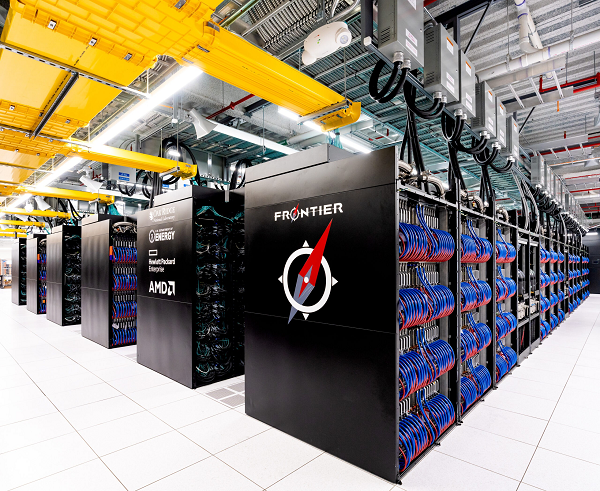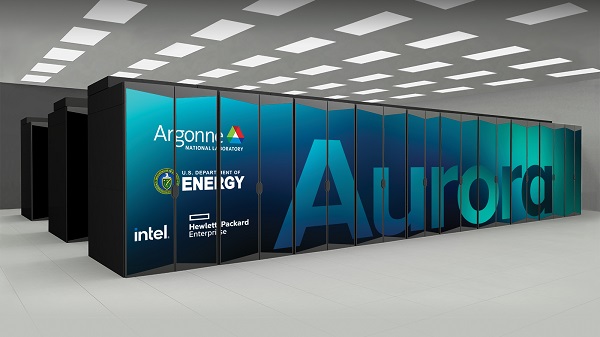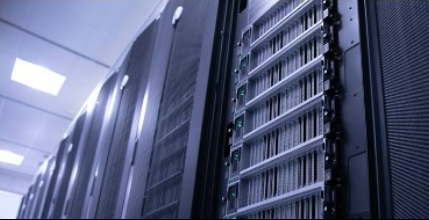Denver — Attendees at the SC23 conference here in Denver have been greeted by a roiled TOP500 ranking of the world’s most powerful supercomputers, along with significant news about a would-be exascale HPC system coming in at no. 2 on the list.
Not only are there four new systems among top 10, the most new entrants at the top of the ranking in years, but one of them, the no. 2 Aurora supercomputer at Argonne National Laboratory, fell short of exascale expectations, registering a High Performance LINPACK (HPL) benchmark of 585 petaflops. This means the incumbent no. 1 system since May 2022, the Frontier exascale system at Oak Ridge National Laboratory, remains on top at 1.2 exaflops.
New systems in the TOP500 top 10 include:
- No. 2: Aurora achieved an HPL score of 585 petaflops on half of the full system, which is still being tuned and optimized at Argonne to leverage the full system (see this recent @HPCpodcast discussion with senior Argonne managers). This Intel system is based on HPE Cray EX-Intel exascale compute blades and uses Intel Xeon CPU Max Series processors, Intel Data Center GPU Max Series accelerators and a Slingshot-11 interconnect. When fully optimized, Aurora is expected to deliver approximately 2 exaflops performance.
-

Frontier supercomputer
No. 3, Eagle, installed in the Microsoft Azure Cloud, is the highest TOP500 rank a cloud system has ever achieved. In fact, it was two years ago that an Azure system, Voyager-EUS2, was the first cloud system to enter the TOP10 at no. 10. The Eagle Microsoft NDv5 system has an HPL score of 561.2 PFlop/s and is based on Intel Xeon Platinum 8480C processors and NVIDIA H100 accelerators.
- No. 8 is the MareNostrum 5 ACC system at the EuroHPC/Barcelona Supercomputing Center in Spain. This Atos Eviden BullSequana XH3000 system uses Xeon Platinum 8460Y processors with NVIDIA H100 and Infiniband NDR200. It achieved 183.2 Pflop/s HPL performance.
- No. 9, the Eos system is a NVIDIA DGX SuperPOD at NVIDIA, based on the NVIDIA DGX H100 accelerator with Xeon Platinum 8480C processors and Infiniband NDR400, achieving 121.4 Pflop/s.
The rest of the TOP500 top 10 includes:
- No. 1: Frontier, an HPE Cray EX system and the first US system with to exceed 1 exaflops. It uses 8,699,904 cores and combines 3rd Gen AMD EPYC CPUs with AMD Instinct 250X accelerators, and a Slingshot-11 interconnect.
- No. 4: Fugaku is installed at the RIKEN Center for Computational Science (R-CCS) in Kobe, Japan. The Fujitsu system powered by Arm processors has 7,630,848 cores and achieved an HPL benchmark score of 442 Pflop/s.
- No. 5: The upgraded LUMI system, an HPE Cray EX system installed at EuroHPC center at CSC in Finland and powered by AMD CPUs and GPUs, registered a performance of 380 petaflops. LUMI is part of the European High-Performance Computing Joint Undertaking (EuroHPC JU).
- No. 6: Leonardo, installed at the CINECA EuroHPC site Italy, is an Atos Eviden BullSequana XH2000 system with Intel Xeon Platinum 8358 32C 2.6GHz as main processors, NVIDIA A100 SXM4 40 GB as accelerators, and Quad-rail NVIDIA HDR100 Infiniband as interconnect. It achieved HPL performance of 238.7 Pflop/s.
- No. 7: Summit, an IBM-built system the Oak Ridge Lab, turned in a performance of 148.8 petaflops. Summit has 4,356 nodes, each one housing two POWER9 CPUs with 22 cores each and six NVIDIA Tesla V100 GPUs, each with 80 streaming multiprocessors (SM). The nodes are linked with a Mellanox dual-rail EDR InfiniBand network.
- No. 10: Sierra, an IBM system at Lawrence Livermore National Laboratory, is built with 4,320 nodes with two POWER9 CPUs and four NVIDIA Tesla V100 GPUs. Sierra achieved 94.6 petaflops.
 This, the 62nd twice-annual TOP500 list, shows that Intel, AMD, and IBM processors are the preferred choice for HPC systems. Of the top 10, five systems use Intel Xeon processors (Aurora, Eagle, Leonardo, MareNostrum 5 ACC, and EOS NVIDIA DGX SuperPod), two systems use AMD processors (Frontier and LUMI), and two systems use IBM processors (Summit and Sierra [though it should be noted that IBM no longer makes leadership-class supercomputers]).
This, the 62nd twice-annual TOP500 list, shows that Intel, AMD, and IBM processors are the preferred choice for HPC systems. Of the top 10, five systems use Intel Xeon processors (Aurora, Eagle, Leonardo, MareNostrum 5 ACC, and EOS NVIDIA DGX SuperPod), two systems use AMD processors (Frontier and LUMI), and two systems use IBM processors (Summit and Sierra [though it should be noted that IBM no longer makes leadership-class supercomputers]).
China and the United States earned most of the entries on the entire TOP500 list, with the U.S. increasing its lead from 150 systems on the previous list to 161 on this one, while China dropped from 134 to 104 ( though it should be noted China no longer submits benchmarks for its most powerful systems).
North America improved from 160 machines on the previous list to 171 on this one, Asia decreased from 192 machines to 169, and Europe increased from 133 systems to 143.
Ethernet is still the most used interconnect on the list, although it decreased its share from 227 machines on the previous list to 209. Infiniband came in second with 219 machines, which was an increase over the previous 200 machines. Omnipath came in third with 33 machines on this list, and custom interconnects came in fourth with 30 machines.
According to the TOP500 organization, in the entire list, 20 new systems now use Intel Sapphire Rapids CPUs. Bringing the total number of systems using this CPU to 25, the Intel Sapphire Rapids CPU is now leading the new CPU among new systems.
GREEN500

Henri supercomputer, Flatiron Institute
The No. 1 spot on the GREEN500 remains Henri at the Flatiron Institute in New York, USA. The system achieved an energy efficiency rating of 65.40 GFlops/Watt while producing an HPL score of 2.88 PFlop/s. Henri is a Lenovo ThinkSystem SR670 with Intel Xeon Platinum and NVIDIA H100, it has 8,288 total cores, and it ranks No. 293 on the TOP500 list.
The Frontier Test & Development (TDS) system at Oak Ridge claims the No. 2 spot with an energy efficiency rating of 62.68 GFlops/Watt and an HPL score of 19.2 PFlop/s. The TDS is basically just one rack identical to the actual Frontier system and utilizes 120,832 total cores.
The No. 3 spot was taken by the Adastra system, which is housed at GENCI-CINES in France. The system achieved an energy efficiency rating of 58.02 GFlops/Watt and an impressive HPL score of 46.1 PFlop/s. Adastra has 319,072 total cores.
In its announcement, TOP500 noted that the actual Frontier system at No. 1 on the TOP500 deserves an honorable mention here for its achievements in energy efficiency. Frontier took the No. 8 spot on the GREEN500 with an energy efficiency of 52.59 GFlops/Watts.
For more details on the entire TOP500 list along with results from other benchmarks, go to the TOP500 web site.




